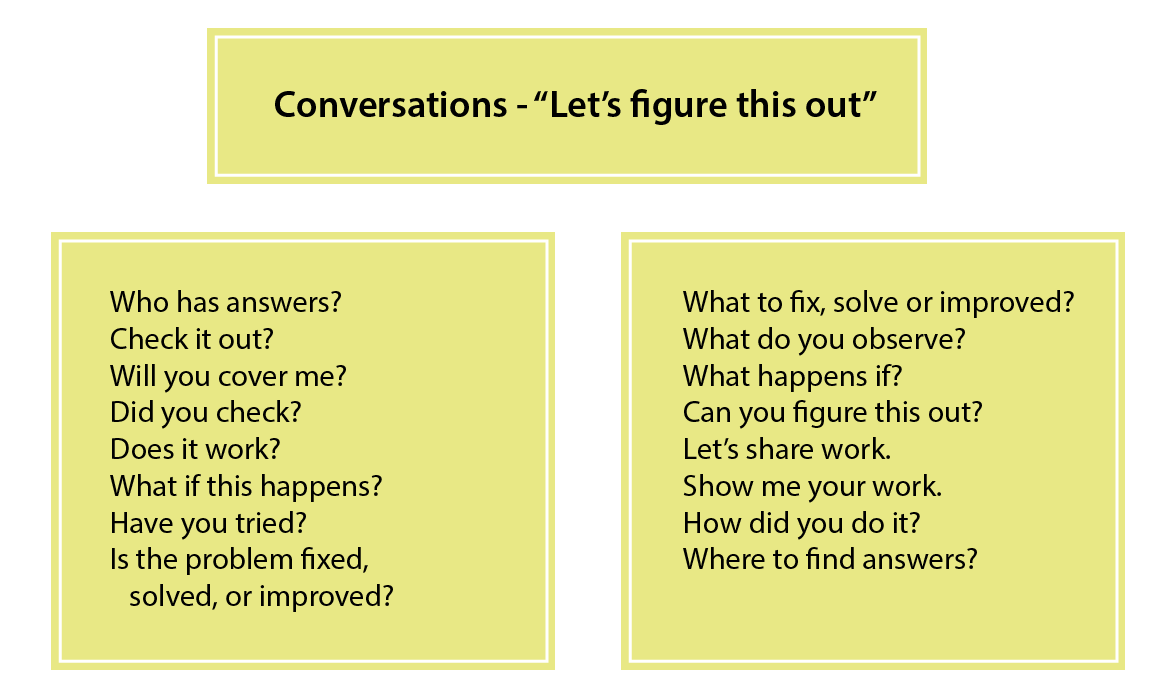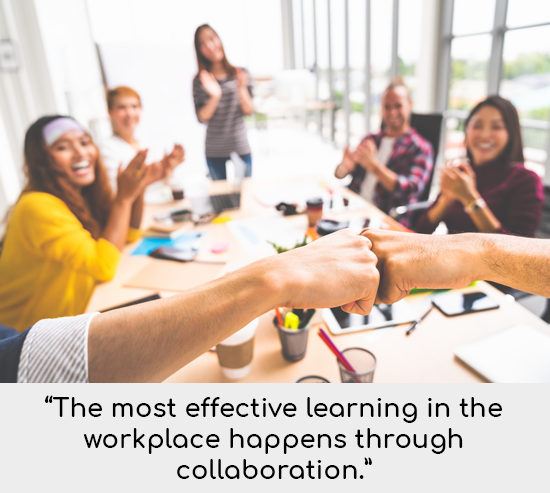In a recent article by Josh Bersin, he acknowledged that we are indeed living in a skills-based community in which people, especially workers, want to learn everything quickly. The volume of online content is huge, and companies are spending more than $200 billion on different types of workplace training programs, including workflow learning. Most of the content is targeted towards the workplace to allow employees to learn new things whenever they get time.
But we need to understand that the most effective and memorable learning happens through communication and collaboration while in the workplace. In Jane Hart’s 2018 survey, a glaring 94% of the respondents think that learning from daily work experiences is very important, followed by knowledge sharing with the team. Learning in the workplace has moved away from the traditional methods.
Collaborative Learning
The best way to study collaboration among employees is to examine how they behave and what they say while at work. We can easily evaluate the type and depth of collaboration by listening to conversations of employees while they are working on a task. Employees commonly collaborate to complete tasks and improve their work situations. They don’t necessarily formally attend meetings to collaborate. Just as work is not a natural place where we “do” learning. People don’t go to work to learn. We simply do work, but work is a transformative process. According to Joseph Raelin, its purpose is to transform activities and resources into some form of result. It is when workers are faced with work problems to fix, solve or improve, small actions or “nudges” present themselves that lead to peer to peer actions and formation of teams within the company.
These are examples of conversations in the workplace in which collaboration happens:

Design new training programs for workplace
No doubt that technology has helped us in various forms, but at the same time, we need to pay attention to the collaborative learning process. It is essential to understand that training programs for employees should be based on collaborative learning, whether they are available online or organized in the meeting room. Group learning activities can also be designed for employees because they help to generate fast and effective results in limited time. It does not mean that traditional learning strategies should be ignored. It is better to maintain a healthy balance between instructional and collaborative learning process for better results.
Conclusion
The challenge in learning through collaboration is that we set a very tall order and tell people how to best collaborate. Instead of recognizing that collaboration already exists, we don’t, and as a result it becomes a foreign concept in the workplace. We must foster the culture of collaboration and make it a native practice by acknowledging that workers, whether shallow or deep, do collaborate in their own ways. How we harness them and actively promote the process is the key.
References
Ray Jimenez, Workflow Learning
Jane Hart. (2018). 7th Annual Learning in the Workplace Survey results.
Thaler, R. H. & Sunstein, C. R. (2009). Nudge: Improving Decisions About Health, Wealth, and Happiness.
Ray Jimenez, PhD
Vignettes Learning
“Helping Learners Learn Their Way”

